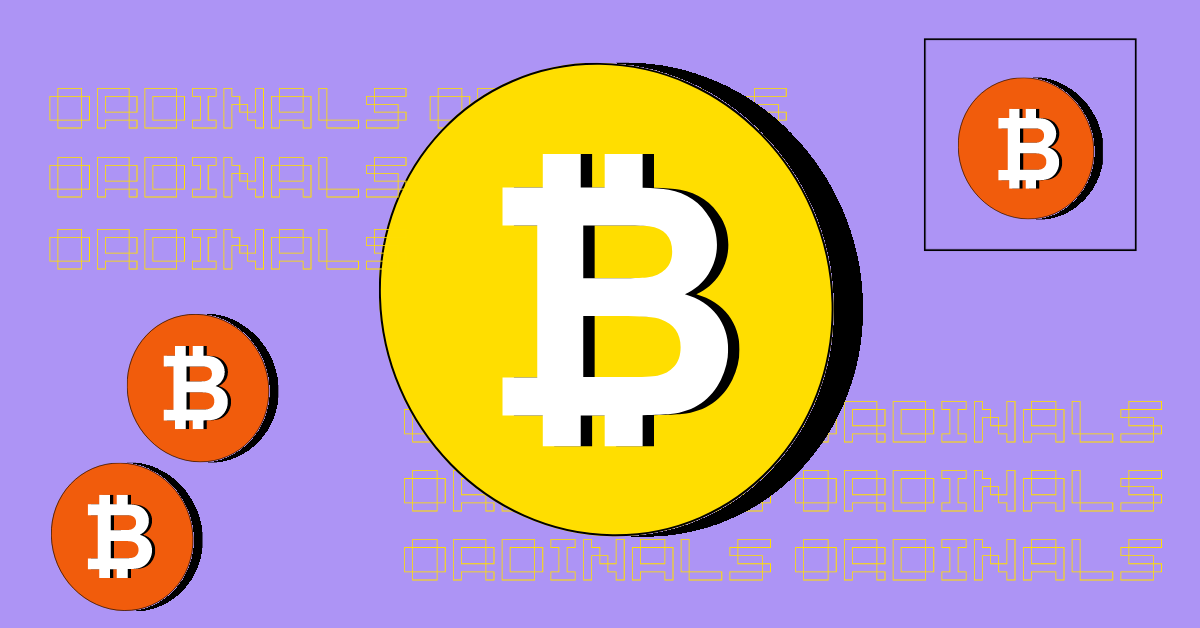
Imagine owning a digital collectible that can never be deleted, altered, or lost—secured forever on the most powerful blockchain in the world. Sounds revolutionary, right?
That’s exactly what Bitcoin Ordinals bring to the table. Unlike traditional NFTs, which often rely on external storage, Ordinals embed digital assets directly onto Bitcoin itself, making them a groundbreaking evolution in blockchain technology.
But how does it all work? And why is this such a big deal?
Let’s dive in for all the answers to your questions.
Bitcoin Ordinals are digital assets inscribed onto individual satoshis (sats), the smallest unit of Bitcoin—similar to how cents make up a dollar. There are 100 million sats in one Bitcoin.
Through the Ordinals protocol, users can embed images, text, videos, and even small applications directly onto the Bitcoin blockchain. Think of it as writing on a dollar bill—but in a way that is permanent and unchangeable.
Unlike traditional NFTs, which are usually stored off-chain with only a reference link on the blockchain, Bitcoin Ordinals store everything directly on Bitcoin, making them truly immutable.
Imagine a famous artist inscribing a one-of-a-kind digital painting onto a Bitcoin satoshi. That artwork is now forever embedded into the Bitcoin blockchain, and anyone can verify its authenticity.
To understand Ordinals, you need to know two key things:
The Taproot upgrade in 2021 made this possible by expanding the amount of data that could be stored in transactions. Thanks to Taproot, users can now store more than just transaction details—they can store full-fledged digital assets.
Let’s say you inscribe a rare GIF onto a satoshi. That satoshi, now carrying digital art, can be transferred from one Bitcoin wallet to another just like any regular Bitcoin transaction.
Unlike traditional NFTs, which are often stored off-chain, minting Bitcoin Ordinals involves a fully on-chain process that requires a few extra steps.
Bitcoin Ordinals do not yet have large, established marketplaces like OpenSea for Ethereum NFTs. Instead, they are primarily traded peer-to-peer (P2P) through specialized platforms and wallets.
Let’s say you buy an Ordinal with a pixel art image inscribed on it. The seller sends the satoshi carrying that image to your wallet, just like a normal Bitcoin transaction.
Bitcoin Ordinals have sparked major debates and changes in the Bitcoin community. Some see them as a revolutionary way to bring art and digital assets to Bitcoin, while others argue they clog the network and raise transaction fees.
While Bitcoin Ordinals are exciting, they are not without problems:
In early 2023, the Bitcoin network saw a surge in fees due to the popularity of Ordinals, leading some Bitcoin purists to criticize the innovation.
Also Read: Hardware Wallets: The Ultimate Cold Storage Solution
Despite challenges, Bitcoin Ordinals are here to stay. Developers are finding ways to optimize inscriptions, and new marketplaces are emerging to support trading.
Bitcoin Ordinals are redefining what’s possible on the Bitcoin blockchain, blending digital art, collectibles, and decentralized ownership in a way never seen before. As the ecosystem grows and more tools emerge, Ordinals could become a major force in the NFT space.
Whether you’re looking to collect, create, or simply learn, diving into Ordinals now could mean getting in early on the next big shift in digital assets.
Bitcoin Ordinals are digital assets inscribed onto individual satoshis, enabling true on-chain storage of images, text, and collectibles on Bitcoin.
You can get Bitcoin Ordinals by buying from marketplaces like Magic Eden, using OTC trades, or inscribing them onto satoshis via an Ordinals service.
Bitcoin Ordinals’ value varies based on rarity, demand, and inscription type, with prices ranging from a few dollars to thousands per Ordinal.
Bitcoin Ordinals were created by Casey Rodarmor introducing a way to inscribe digital assets directly onto the Bitcoin blockchain.
No, Bitcoin Ordinals are fully on-chain, while most NFTs store data off-chain, linking to external storage rather than embedding data into the blockchain.
CoinPedia has been delivering accurate and timely cryptocurrency and blockchain updates since 2017. All content is created by our expert panel of analysts and journalists, following strict Editorial Guidelines based on E-E-A-T (Experience, Expertise, Authoritativeness, Trustworthiness). Every article is fact-checked against reputable sources to ensure accuracy, transparency, and reliability. Our review policy guarantees unbiased evaluations when recommending exchanges, platforms, or tools. We strive to provide timely updates about everything crypto & blockchain, right from startups to industry majors.
All opinions and insights shared represent the author's own views on current market conditions. Please do your own research before making investment decisions. Neither the writer nor the publication assumes responsibility for your financial choices.
Sponsored content and affiliate links may appear on our site. Advertisements are marked clearly, and our editorial content remains entirely independent from our ad partners.
SBI Ripple Asia has signed an agreement with Doppler Finance to explore new financial products…
Christmas week is here, and Bitcoin investors are waiting to see if the market delivers…
As 2025 comes to an end, the crypto market looks very different from last year.…
Avalanche’s AVAX token is trading at $12.24, marking a more than 60% drop in value…
In crypto markets, price does not always move in smooth trends. It often jumps in…
As investors look ahead to 2026, many are asking a basic question: Which altcoins have…